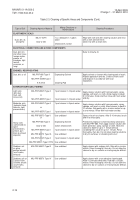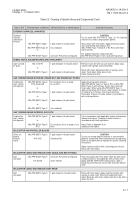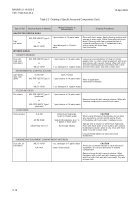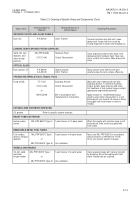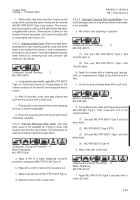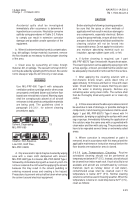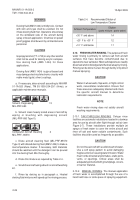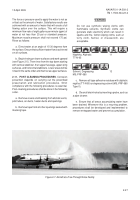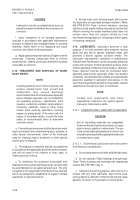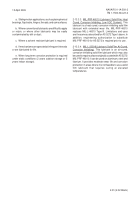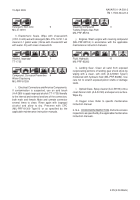TM-1-1500-344-23-2 - Page 50 of 240
2-26
NAVAIR 01-1A-509-2
TM 1-1500-344-23-2
15 April 2009
WARNING
Deicing fluid (AMS 1424) is mildly toxic. Contact
with skin and eyes shall be avoided. Do not
inhale deicing fluid mist. Operators should stay
on the windward side of the aircraft during
spray or brush application. Chemical or splash
proof goggles shall be worn by all maintenance
personnel.
CAUTION
Isopropyl alcohol (TT-I-735) or any other alcohol
shall not be used for deicing acrylic canopies.
Use deicing fluid (AMS 1424) for these
applications.
Deicing fluid (AMS 1424) is glycol-based and
may damage electrical/electronic circuitry with
noble metal (gold, silver) coatings.
a. If necessary, deice aircraft according to NAVAIR
01-1A-520 (Navy), TM 55-1500-204-25/1 (Army), or
applicable maintenance manuals.
Solvent, Degreasing
13
MIL-PRF-680
b. Solvent clean heavily soiled areas of aircraft by
wiping or brushing with degreasing solvent
(MIL-PRF-680 Type II).
Compound, Aircraft Cleaning
2
MIL-PRF--85570
c. Dilute aircraft cleaning fluid (MIL-PRF-85570
Type II) with diluted deicing fluid (AMS 1424) to make a
low temperature cleaner. If necessary, both materials
should be warmed until the detergent can be poured
into the deicing fluid. Mix thoroughly.
d. Dilute this mixture as required by Table 2-4.
e. Scrub the aircraft using a brush or aircraft washing
kit.
f. Rinse by deicing as in paragraph a. Heated
deicing fluid mixtures will speed up the rinsing process.
2-10. FRESH WATER RINSING
. The purpose of fresh
water rinsing is primarily to remove salt from aircraft
surfaces that have become contaminated due to
operations near salt water. Most salt deposits are readily
dissolved and/or dislodged and flushed away by rinsing.
Rinsing can be done in a taxi-through facility or by direct
manual spraying.
CAUTION
Water in wheel wells, flap wells, or flight control
wells, necessitates relubrication. Ensure that
these areas are adequately drained and check
the specific aircraft manual to determine
lubrication requirements.
NOTE
Fresh water rinsing does not satisfy aircraft
washing requirements.
2-10.1. TAXI-THROUGH RINSING. Deluge rinse
facilities are automatic installations located in a taxiway
area for use by aircraft after flight through salt air (see
Figure 2-7). These installations provide multiple jet
sprays of fresh water to cover the entire aircraft and
rinse off salt and water soluble contaminants. Such
facilities should be used as frequently as possible.
CAUTION
Do not rinse aircraft with a solid stream of water.
Use a soft spray pattern to avoid damaging
fragile sections or causing water intrusion. Water
must not be directed at pitot tubes, static ports,
vents, or openings. Critical areas shall be
adequately protected with ground plugs, covers,
or barrier material.
2-10.2.
MANUAL RINSING. The manual application
of fresh water is accomplished through the use of a
hand held hose or some piece of spraying equipment.
Table 2-4.
Recommended Dilution of
Low Temperature Cleaner
e
r
u
t
a
r
e
p
m
e
T
t
n
e
i
b
m
A
n
o
i
t
u
l
i
D
)
r
e
t
a
w
s
t
r
a
p
:
e
r
u
t
x
i
m
s
t
r
a
p
(
e
v
o
b
a
d
n
a
F
°
0
3
+4
:
1
F
°
0
3
+
o
t
F
°
0
2
+2
:
1
w
o
l
e
b
d
n
a
F
°
0
1
+1
:
1
Back to Top

